使用scikit-learn为PyTorch 模型进行超参数网格搜索
scikit-learn是Python中最好的机器学习库,而PyTorch又为我们构建模型提供了方便的操作,能否将它们的优点整合起来呢?在本文中,我们将介绍如何使用 scikit-learn中的网格搜索功能来调整 PyTorch 深度学习模型的超参数:
- 如何包装 PyTorch 模型以用于 scikit-learn 以及如何使用网格搜索
- 如何网格搜索常见的神经网络参数,如学习率、Dropout、epochs、神经元数
- 在自己的项目上定义自己的超参数调优实验
如何在 scikit-learn 中使用 PyTorch 模型
要让PyTorch 模型可以在 scikit-learn 中使用的一个最简单的方法是使用skorch包。这个包为 PyTorch 模型提供与 scikit-learn 兼容的 API。 在skorch中,有分类神经网络的NeuralNetClassifier和回归神经网络的NeuralNetRegressor。
pip install skorch

要使用这些包装器,必须使用 nn.Module 将 PyTorch 模型定义为类,然后在构造 NeuralNetClassifier 类时将类的名称传递给模块参数。 例如:
class MyClassifier(nn.Module):def __init__(self):super().__init__()...def forward(self, x):...return x# create the skorch wrappermodel = NeuralNetClassifier(module=MyClassifier)
NeuralNetClassifier 类的构造函数可以获得传递给 model.fit() 调用的参数(在 scikit-learn 模型中调用训练循环的方法),例如轮次数和批量大小等。 例如:
model = NeuralNetClassifier(module=MyClassifier,max_epochs=150,batch_size=10)
NeuralNetClassifier类的构造函数也可以接受新的参数,这些参数可以传递给你的模型类的构造函数,要求是必须在它前面加上module__(两个下划线)。这些新参数可能在构造函数中带有默认值,但当包装器实例化模型时,它们将被覆盖。例如:
import torch.nn as nnfrom skorch import NeuralNetClassifierclass SonarClassifier(nn.Module):def __init__(self, n_layers=3):super().__init__()self.layers = []self.acts = []for i in range(n_layers):self.layers.append(nn.Linear(60, 60))self.acts.append(nn.ReLU())self.add_module(f"layer{i}", self.layers[-1])self.add_module(f"act{i}", self.acts[-1])self.output = nn.Linear(60, 1)def forward(self, x):for layer, act in zip(self.layers, self.acts):x = act(layer(x))x = self.output(x)return xmodel = NeuralNetClassifier(module=SonarClassifier,max_epochs=150,batch_size=10,module__n_layers=2)
我们可以通过初始化一个模型并打印来验证结果:
print(model.initialize())#结果如下:<class 'skorch.classifier.NeuralNetClassifier'>[initialized](module_=SonarClassifier((layer0): Linear(in_features=60, out_features=60, bias=True)(act0): ReLU()(layer1): Linear(in_features=60, out_features=60, bias=True)(act1): ReLU()(output): Linear(in_features=60, out_features=1, bias=True)),)
在scikit-learn中使用网格搜索
网格搜索是一种模型超参数优化技术。它只是简单地穷尽超参数的所有组合,并找到给出最佳分数的组合。在scikit-learn中,GridSearchCV类提供了这种技术。在构造这个类时,必须在param_grid参数中提供一个超参数字典。这是模型参数名和要尝试的值数组的映射。
默认使用精度作为优化的分数,但其他分数可以在GridSearchCV构造函数的score参数中指定。GridSearchCV将为每个参数组合构建一个模型进行评估。并且使用默认的3倍交叉验证,这些都是可以通过参数来进行设置的。
下面是定义一个简单网格搜索的例子:
param_grid = {'epochs': [10,20,30]}grid = GridSearchCV(estimator=model, param_grid=param_grid, n_jobs=-1, cv=3)grid_result = grid.fit(X, Y)
通过将GridSearchCV构造函数中的n_jobs参数设置为 -1表示将使用机器上的所有核心。否则,网格搜索进程将只在单线程中运行,这在多核cpu中较慢。
运行完毕就可以在grid.fit()返回的结果对象中访问网格搜索的结果。best_score提供了在优化过程中观察到的最佳分数,best_params_描述了获得最佳结果的参数组合。
示例问题描述
我们的示例都将在一个小型标准机器学习数据集上进行演示,该数据集是一个糖尿病发作分类数据集。这是一个小型数据集,所有的数值属性都很容易处理。
如何调优批大小和训练的轮次
在第一个简单示例中,我们将介绍如何调优批大小和拟合网络时使用的epoch数。
我们将简单评估从10到100的不批大小,代码清单如下所示:
import randomimport numpy as npimport torchimport torch.nn as nnimport torch.optim as optimfrom skorch import NeuralNetClassifierfrom sklearn.model_selection import GridSearchCV# load the dataset, split into input (X) and output (y) variablesdataset = np.loadtxt('pima-indians-diabetes.csv', delimiter=',')X = dataset[:,0:8]y = dataset[:,8]X = torch.tensor(X, dtype=torch.float32)y = torch.tensor(y, dtype=torch.float32).reshape(-1, 1)# PyTorch classifierclass PimaClassifier(nn.Module):def __init__(self):super().__init__()self.layer = nn.Linear(8, 12)self.act = nn.ReLU()self.output = nn.Linear(12, 1)self.prob = nn.Sigmoid()def forward(self, x):x = self.act(self.layer(x))x = self.prob(self.output(x))return x# create model with skorchmodel = NeuralNetClassifier(PimaClassifier,criterion=nn.BCELoss,optimizer=optim.Adam,verbose=False)# define the grid search parametersparam_grid = {'batch_size': [10, 20, 40, 60, 80, 100],'max_epochs': [10, 50, 100]}grid = GridSearchCV(estimator=model, param_grid=param_grid, n_jobs=-1, cv=3)grid_result = grid.fit(X, y)# summarize resultsprint("Best: %f using %s" % (grid_result.best_score_, grid_result.best_params_))means = grid_result.cv_results_['mean_test_score']stds = grid_result.cv_results_['std_test_score']params = grid_result.cv_results_['params']for mean, stdev, param in zip(means, stds, params):print("%f (%f) with: %r" % (mean, stdev, param))
结果如下:
Best: 0.714844 using {'batch_size': 10, 'max_epochs': 100}0.665365 (0.020505) with: {'batch_size': 10, 'max_epochs': 10}0.588542 (0.168055) with: {'batch_size': 10, 'max_epochs': 50}0.714844 (0.032369) with: {'batch_size': 10, 'max_epochs': 100}0.671875 (0.022326) with: {'batch_size': 20, 'max_epochs': 10}0.696615 (0.008027) with: {'batch_size': 20, 'max_epochs': 50}0.714844 (0.019918) with: {'batch_size': 20, 'max_epochs': 100}0.666667 (0.009744) with: {'batch_size': 40, 'max_epochs': 10}0.687500 (0.033603) with: {'batch_size': 40, 'max_epochs': 50}0.707031 (0.024910) with: {'batch_size': 40, 'max_epochs': 100}0.667969 (0.014616) with: {'batch_size': 60, 'max_epochs': 10}0.694010 (0.036966) with: {'batch_size': 60, 'max_epochs': 50}0.694010 (0.042473) with: {'batch_size': 60, 'max_epochs': 100}0.670573 (0.023939) with: {'batch_size': 80, 'max_epochs': 10}0.674479 (0.020752) with: {'batch_size': 80, 'max_epochs': 50}0.703125 (0.026107) with: {'batch_size': 80, 'max_epochs': 100}0.680990 (0.014382) with: {'batch_size': 100, 'max_epochs': 10}0.670573 (0.013279) with: {'batch_size': 100, 'max_epochs': 50}0.687500 (0.017758) with: {'batch_size': 100, 'max_epochs': 100}
可以看到’batch_size’: 10, ‘max_epochs’: 100达到了约71%的精度的最佳结果。
如何调整训练优化器
下面我们看看如何调整优化器,我们知道有很多个优化器可以选择比如SDG,Adam等,那么如何选择呢?
完整的代码如下:
import numpy as npimport torchimport torch.nn as nnimport torch.optim as optimfrom skorch import NeuralNetClassifierfrom sklearn.model_selection import GridSearchCV# load the dataset, split into input (X) and output (y) variablesdataset = np.loadtxt('pima-indians-diabetes.csv', delimiter=',')X = dataset[:,0:8]y = dataset[:,8]X = torch.tensor(X, dtype=torch.float32)y = torch.tensor(y, dtype=torch.float32).reshape(-1, 1)# PyTorch classifierclass PimaClassifier(nn.Module):def __init__(self):super().__init__()self.layer = nn.Linear(8, 12)self.act = nn.ReLU()self.output = nn.Linear(12, 1)self.prob = nn.Sigmoid()def forward(self, x):x = self.act(self.layer(x))x = self.prob(self.output(x))return x# create model with skorchmodel = NeuralNetClassifier(PimaClassifier,criterion=nn.BCELoss,max_epochs=100,batch_size=10,verbose=False)# define the grid search parametersparam_grid = {'optimizer': [optim.SGD, optim.RMSprop, optim.Adagrad, optim.Adadelta,optim.Adam, optim.Adamax, optim.NAdam],}grid = GridSearchCV(estimator=model, param_grid=param_grid, n_jobs=-1, cv=3)grid_result = grid.fit(X, y)# summarize resultsprint("Best: %f using %s" % (grid_result.best_score_, grid_result.best_params_))means = grid_result.cv_results_['mean_test_score']stds = grid_result.cv_results_['std_test_score']params = grid_result.cv_results_['params']for mean, stdev, param in zip(means, stds, params):print("%f (%f) with: %r" % (mean, stdev, param))
输出如下:
Best: 0.721354 using {'optimizer': <class 'torch.optim.adamax.Adamax'>}0.674479 (0.036828) with: {'optimizer': <class 'torch.optim.sgd.SGD'>}0.700521 (0.043303) with: {'optimizer': <class 'torch.optim.rmsprop.RMSprop'>}0.682292 (0.027126) with: {'optimizer': <class 'torch.optim.adagrad.Adagrad'>}0.572917 (0.051560) with: {'optimizer': <class 'torch.optim.adadelta.Adadelta'>}0.714844 (0.030758) with: {'optimizer': <class 'torch.optim.adam.Adam'>}0.721354 (0.019225) with: {'optimizer': <class 'torch.optim.adamax.Adamax'>}0.709635 (0.024360) with: {'optimizer': <class 'torch.optim.nadam.NAdam'>}
可以看到对于我们的模型和数据集Adamax优化算法是最佳的,准确率约为72%。
如何调整学习率
虽然pytorch里面学习率计划可以让我们根据轮次动态调整学习率,但是作为样例,我们将学习率和学习率的参数作为网格搜索的一个参数来进行演示。在PyTorch中,设置学习率和动量的方法如下:
optimizer = optim.SGD(lr=0.001, momentum=0.9)
在skorch包中,使用前缀optimizer__将参数路由到优化器。
import numpy as npimport torchimport torch.nn as nnimport torch.optim as optimfrom skorch import NeuralNetClassifierfrom sklearn.model_selection import GridSearchCV# load the dataset, split into input (X) and output (y) variablesdataset = np.loadtxt('pima-indians-diabetes.csv', delimiter=',')X = dataset[:,0:8]y = dataset[:,8]X = torch.tensor(X, dtype=torch.float32)y = torch.tensor(y, dtype=torch.float32).reshape(-1, 1)# PyTorch classifierclass PimaClassifier(nn.Module):def __init__(self):super().__init__()self.layer = nn.Linear(8, 12)self.act = nn.ReLU()self.output = nn.Linear(12, 1)self.prob = nn.Sigmoid()def forward(self, x):x = self.act(self.layer(x))x = self.prob(self.output(x))return x# create model with skorchmodel = NeuralNetClassifier(PimaClassifier,criterion=nn.BCELoss,optimizer=optim.SGD,max_epochs=100,batch_size=10,verbose=False)# define the grid search parametersparam_grid = {'optimizer__lr': [0.001, 0.01, 0.1, 0.2, 0.3],'optimizer__momentum': [0.0, 0.2, 0.4, 0.6, 0.8, 0.9],}grid = GridSearchCV(estimator=model, param_grid=param_grid, n_jobs=-1, cv=3)grid_result = grid.fit(X, y)# summarize resultsprint("Best: %f using %s" % (grid_result.best_score_, grid_result.best_params_))means = grid_result.cv_results_['mean_test_score']stds = grid_result.cv_results_['std_test_score']params = grid_result.cv_results_['params']for mean, stdev, param in zip(means, stds, params):print("%f (%f) with: %r" % (mean, stdev, param))
结果如下:
Best: 0.682292 using {'optimizer__lr': 0.001, 'optimizer__momentum': 0.9}0.648438 (0.016877) with: {'optimizer__lr': 0.001, 'optimizer__momentum': 0.0}0.671875 (0.017758) with: {'optimizer__lr': 0.001, 'optimizer__momentum': 0.2}0.674479 (0.022402) with: {'optimizer__lr': 0.001, 'optimizer__momentum': 0.4}0.677083 (0.011201) with: {'optimizer__lr': 0.001, 'optimizer__momentum': 0.6}0.679688 (0.027621) with: {'optimizer__lr': 0.001, 'optimizer__momentum': 0.8}0.682292 (0.026557) with: {'optimizer__lr': 0.001, 'optimizer__momentum': 0.9}0.671875 (0.019918) with: {'optimizer__lr': 0.01, 'optimizer__momentum': 0.0}0.648438 (0.024910) with: {'optimizer__lr': 0.01, 'optimizer__momentum': 0.2}0.546875 (0.143454) with: {'optimizer__lr': 0.01, 'optimizer__momentum': 0.4}0.567708 (0.153668) with: {'optimizer__lr': 0.01, 'optimizer__momentum': 0.6}0.552083 (0.141790) with: {'optimizer__lr': 0.01, 'optimizer__momentum': 0.8}0.451823 (0.144561) with: {'optimizer__lr': 0.01, 'optimizer__momentum': 0.9}0.348958 (0.001841) with: {'optimizer__lr': 0.1, 'optimizer__momentum': 0.0}0.450521 (0.142719) with: {'optimizer__lr': 0.1, 'optimizer__momentum': 0.2}0.450521 (0.142719) with: {'optimizer__lr': 0.1, 'optimizer__momentum': 0.4}0.450521 (0.142719) with: {'optimizer__lr': 0.1, 'optimizer__momentum': 0.6}0.348958 (0.001841) with: {'optimizer__lr': 0.1, 'optimizer__momentum': 0.8}0.348958 (0.001841) with: {'optimizer__lr': 0.1, 'optimizer__momentum': 0.9}0.444010 (0.136265) with: {'optimizer__lr': 0.2, 'optimizer__momentum': 0.0}0.450521 (0.142719) with: {'optimizer__lr': 0.2, 'optimizer__momentum': 0.2}0.348958 (0.001841) with: {'optimizer__lr': 0.2, 'optimizer__momentum': 0.4}0.552083 (0.141790) with: {'optimizer__lr': 0.2, 'optimizer__momentum': 0.6}0.549479 (0.142719) with: {'optimizer__lr': 0.2, 'optimizer__momentum': 0.8}0.651042 (0.001841) with: {'optimizer__lr': 0.2, 'optimizer__momentum': 0.9}0.552083 (0.141790) with: {'optimizer__lr': 0.3, 'optimizer__momentum': 0.0}0.348958 (0.001841) with: {'optimizer__lr': 0.3, 'optimizer__momentum': 0.2}0.450521 (0.142719) with: {'optimizer__lr': 0.3, 'optimizer__momentum': 0.4}0.552083 (0.141790) with: {'optimizer__lr': 0.3, 'optimizer__momentum': 0.6}0.450521 (0.142719) with: {'optimizer__lr': 0.3, 'optimizer__momentum': 0.8}0.450521 (0.142719) with: {'optimizer__lr': 0.3, 'optimizer__momentum': 0.9}
对于SGD,使用0.001的学习率和0.9的动量获得了最佳结果,准确率约为68%。
如何激活函数
激活函数控制单个神经元的非线性。我们将演示评估PyTorch中可用的一些激活函数。
import numpy as npimport torchimport torch.nn as nnimport torch.nn.init as initimport torch.optim as optimfrom skorch import NeuralNetClassifierfrom sklearn.model_selection import GridSearchCV# load the dataset, split into input (X) and output (y) variablesdataset = np.loadtxt('pima-indians-diabetes.csv', delimiter=',')X = dataset[:,0:8]y = dataset[:,8]X = torch.tensor(X, dtype=torch.float32)y = torch.tensor(y, dtype=torch.float32).reshape(-1, 1)# PyTorch classifierclass PimaClassifier(nn.Module):def __init__(self, activation=nn.ReLU):super().__init__()self.layer = nn.Linear(8, 12)self.act = activation()self.output = nn.Linear(12, 1)self.prob = nn.Sigmoid()# manually init weightsinit.kaiming_uniform_(self.layer.weight)init.kaiming_uniform_(self.output.weight)def forward(self, x):x = self.act(self.layer(x))x = self.prob(self.output(x))return x# create model with skorchmodel = NeuralNetClassifier(PimaClassifier,criterion=nn.BCELoss,optimizer=optim.Adamax,max_epochs=100,batch_size=10,verbose=False)# define the grid search parametersparam_grid = {'module__activation': [nn.Identity, nn.ReLU, nn.ELU, nn.ReLU6,nn.GELU, nn.Softplus, nn.Softsign, nn.Tanh,nn.Sigmoid, nn.Hardsigmoid]}grid = GridSearchCV(estimator=model, param_grid=param_grid, n_jobs=-1, cv=3)grid_result = grid.fit(X, y)# summarize resultsprint("Best: %f using %s" % (grid_result.best_score_, grid_result.best_params_))means = grid_result.cv_results_['mean_test_score']stds = grid_result.cv_results_['std_test_score']params = grid_result.cv_results_['params']for mean, stdev, param in zip(means, stds, params):print("%f (%f) with: %r" % (mean, stdev, param))
结果如下:
Best: 0.699219 using {'module__activation': <class 'torch.nn.modules.activation.ReLU'>}0.687500 (0.025315) with: {'module__activation': <class 'torch.nn.modules.linear.Identity'>}0.699219 (0.011049) with: {'module__activation': <class 'torch.nn.modules.activation.ReLU'>}0.674479 (0.035849) with: {'module__activation': <class 'torch.nn.modules.activation.ELU'>}0.621094 (0.063549) with: {'module__activation': <class 'torch.nn.modules.activation.ReLU6'>}0.674479 (0.017566) with: {'module__activation': <class 'torch.nn.modules.activation.GELU'>}0.558594 (0.149189) with: {'module__activation': <class 'torch.nn.modules.activation.Softplus'>}0.675781 (0.014616) with: {'module__activation': <class 'torch.nn.modules.activation.Softsign'>}0.619792 (0.018688) with: {'module__activation': <class 'torch.nn.modules.activation.Tanh'>}0.643229 (0.019225) with: {'module__activation': <class 'torch.nn.modules.activation.Sigmoid'>}0.636719 (0.022326) with: {'module__activation': <class 'torch.nn.modules.activation.Hardsigmoid'>}
ReLU激活函数获得了最好的结果,准确率约为70%。
如何调整Dropout参数
在本例中,我们将尝试在0.0到0.9之间的dropout百分比(1.0没有意义)和在0到5之间的MaxNorm权重约束值。
import numpy as npimport torchimport torch.nn as nnimport torch.nn.init as initimport torch.optim as optimfrom skorch import NeuralNetClassifierfrom sklearn.model_selection import GridSearchCV# load the dataset, split into input (X) and output (y) variablesdataset = np.loadtxt('pima-indians-diabetes.csv', delimiter=',')X = dataset[:,0:8]y = dataset[:,8]X = torch.tensor(X, dtype=torch.float32)y = torch.tensor(y, dtype=torch.float32).reshape(-1, 1)# PyTorch classifierclass PimaClassifier(nn.Module):def __init__(self, dropout_rate=0.5, weight_constraint=1.0):super().__init__()self.layer = nn.Linear(8, 12)self.act = nn.ReLU()self.dropout = nn.Dropout(dropout_rate)self.output = nn.Linear(12, 1)self.prob = nn.Sigmoid()self.weight_constraint = weight_constraint# manually init weightsinit.kaiming_uniform_(self.layer.weight)init.kaiming_uniform_(self.output.weight)def forward(self, x):# maxnorm weight before actual forward passwith torch.no_grad():norm = self.layer.weight.norm(2, dim=0, keepdim=True).clamp(min=self.weight_constraint / 2)desired = torch.clamp(norm, max=self.weight_constraint)self.layer.weight *= (desired / norm)# actual forward passx = self.act(self.layer(x))x = self.dropout(x)x = self.prob(self.output(x))return x# create model with skorchmodel = NeuralNetClassifier(PimaClassifier,criterion=nn.BCELoss,optimizer=optim.Adamax,max_epochs=100,batch_size=10,verbose=False)# define the grid search parametersparam_grid = {'module__weight_constraint': [1.0, 2.0, 3.0, 4.0, 5.0],'module__dropout_rate': [0.0, 0.1, 0.2, 0.3, 0.4, 0.5, 0.6, 0.7, 0.8, 0.9]}grid = GridSearchCV(estimator=model, param_grid=param_grid, n_jobs=-1, cv=3)grid_result = grid.fit(X, y)# summarize resultsprint("Best: %f using %s" % (grid_result.best_score_, grid_result.best_params_))means = grid_result.cv_results_['mean_test_score']stds = grid_result.cv_results_['std_test_score']params = grid_result.cv_results_['params']for mean, stdev, param in zip(means, stds, params):print("%f (%f) with: %r" % (mean, stdev, param))
结果如下:
Best: 0.701823 using {'module__dropout_rate': 0.1, 'module__weight_constraint': 2.0}0.669271 (0.015073) with: {'module__dropout_rate': 0.0, 'module__weight_constraint': 1.0}0.692708 (0.035132) with: {'module__dropout_rate': 0.0, 'module__weight_constraint': 2.0}0.589844 (0.170180) with: {'module__dropout_rate': 0.0, 'module__weight_constraint': 3.0}0.561198 (0.151131) with: {'module__dropout_rate': 0.0, 'module__weight_constraint': 4.0}0.688802 (0.021710) with: {'module__dropout_rate': 0.0, 'module__weight_constraint': 5.0}0.697917 (0.009744) with: {'module__dropout_rate': 0.1, 'module__weight_constraint': 1.0}0.701823 (0.016367) with: {'module__dropout_rate': 0.1, 'module__weight_constraint': 2.0}0.694010 (0.010253) with: {'module__dropout_rate': 0.1, 'module__weight_constraint': 3.0}0.686198 (0.025976) with: {'module__dropout_rate': 0.1, 'module__weight_constraint': 4.0}0.679688 (0.026107) with: {'module__dropout_rate': 0.1, 'module__weight_constraint': 5.0}0.701823 (0.029635) with: {'module__dropout_rate': 0.2, 'module__weight_constraint': 1.0}0.682292 (0.014731) with: {'module__dropout_rate': 0.2, 'module__weight_constraint': 2.0}0.701823 (0.009744) with: {'module__dropout_rate': 0.2, 'module__weight_constraint': 3.0}0.701823 (0.026557) with: {'module__dropout_rate': 0.2, 'module__weight_constraint': 4.0}0.687500 (0.015947) with: {'module__dropout_rate': 0.2, 'module__weight_constraint': 5.0}0.686198 (0.006639) with: {'module__dropout_rate': 0.3, 'module__weight_constraint': 1.0}0.656250 (0.006379) with: {'module__dropout_rate': 0.3, 'module__weight_constraint': 2.0}0.565104 (0.155608) with: {'module__dropout_rate': 0.3, 'module__weight_constraint': 3.0}0.700521 (0.028940) with: {'module__dropout_rate': 0.3, 'module__weight_constraint': 4.0}0.669271 (0.012890) with: {'module__dropout_rate': 0.3, 'module__weight_constraint': 5.0}0.661458 (0.018688) with: {'module__dropout_rate': 0.4, 'module__weight_constraint': 1.0}0.669271 (0.017566) with: {'module__dropout_rate': 0.4, 'module__weight_constraint': 2.0}0.652344 (0.006379) with: {'module__dropout_rate': 0.4, 'module__weight_constraint': 3.0}0.680990 (0.037783) with: {'module__dropout_rate': 0.4, 'module__weight_constraint': 4.0}0.692708 (0.042112) with: {'module__dropout_rate': 0.4, 'module__weight_constraint': 5.0}0.666667 (0.006639) with: {'module__dropout_rate': 0.5, 'module__weight_constraint': 1.0}0.652344 (0.011500) with: {'module__dropout_rate': 0.5, 'module__weight_constraint': 2.0}0.662760 (0.007366) with: {'module__dropout_rate': 0.5, 'module__weight_constraint': 3.0}0.558594 (0.146610) with: {'module__dropout_rate': 0.5, 'module__weight_constraint': 4.0}0.552083 (0.141826) with: {'module__dropout_rate': 0.5, 'module__weight_constraint': 5.0}0.548177 (0.141826) with: {'module__dropout_rate': 0.6, 'module__weight_constraint': 1.0}0.653646 (0.013279) with: {'module__dropout_rate': 0.6, 'module__weight_constraint': 2.0}0.661458 (0.008027) with: {'module__dropout_rate': 0.6, 'module__weight_constraint': 3.0}0.553385 (0.142719) with: {'module__dropout_rate': 0.6, 'module__weight_constraint': 4.0}0.669271 (0.035132) with: {'module__dropout_rate': 0.6, 'module__weight_constraint': 5.0}0.662760 (0.015733) with: {'module__dropout_rate': 0.7, 'module__weight_constraint': 1.0}0.636719 (0.024910) with: {'module__dropout_rate': 0.7, 'module__weight_constraint': 2.0}0.550781 (0.146818) with: {'module__dropout_rate': 0.7, 'module__weight_constraint': 3.0}0.537760 (0.140094) with: {'module__dropout_rate': 0.7, 'module__weight_constraint': 4.0}0.542969 (0.138144) with: {'module__dropout_rate': 0.7, 'module__weight_constraint': 5.0}0.565104 (0.148654) with: {'module__dropout_rate': 0.8, 'module__weight_constraint': 1.0}0.657552 (0.008027) with: {'module__dropout_rate': 0.8, 'module__weight_constraint': 2.0}0.428385 (0.111418) with: {'module__dropout_rate': 0.8, 'module__weight_constraint': 3.0}0.549479 (0.142719) with: {'module__dropout_rate': 0.8, 'module__weight_constraint': 4.0}0.648438 (0.005524) with: {'module__dropout_rate': 0.8, 'module__weight_constraint': 5.0}0.540365 (0.136861) with: {'module__dropout_rate': 0.9, 'module__weight_constraint': 1.0}0.605469 (0.053083) with: {'module__dropout_rate': 0.9, 'module__weight_constraint': 2.0}0.553385 (0.139948) with: {'module__dropout_rate': 0.9, 'module__weight_constraint': 3.0}0.549479 (0.142719) with: {'module__dropout_rate': 0.9, 'module__weight_constraint': 4.0}0.595052 (0.075566) with: {'module__dropout_rate': 0.9, 'module__weight_constraint': 5.0}
可以看到,10%的Dropout和2.0的权重约束获得了70%的最佳精度。
如何调整隐藏层神经元的数量
单层神经元的数量是一个需要调优的重要参数。一般来说,一层神经元的数量控制着网络的表示能力,至少在拓扑的这一点上是这样。
理论上来说:由于通用逼近定理,一个足够大的单层网络可以近似任何其他神经网络。
在本例中,将尝试从1到30的值,步骤为5。一个更大的网络需要更多的训练,至少批大小和epoch的数量应该与神经元的数量一起优化。
import numpy as npimport torchimport torch.nn as nnimport torch.nn.init as initimport torch.optim as optimfrom skorch import NeuralNetClassifierfrom sklearn.model_selection import GridSearchCV# load the dataset, split into input (X) and output (y) variablesdataset = np.loadtxt('pima-indians-diabetes.csv', delimiter=',')X = dataset[:,0:8]y = dataset[:,8]X = torch.tensor(X, dtype=torch.float32)y = torch.tensor(y, dtype=torch.float32).reshape(-1, 1)class PimaClassifier(nn.Module):def __init__(self, n_neurons=12):super().__init__()self.layer = nn.Linear(8, n_neurons)self.act = nn.ReLU()self.dropout = nn.Dropout(0.1)self.output = nn.Linear(n_neurons, 1)self.prob = nn.Sigmoid()self.weight_constraint = 2.0# manually init weightsinit.kaiming_uniform_(self.layer.weight)init.kaiming_uniform_(self.output.weight)def forward(self, x):# maxnorm weight before actual forward passwith torch.no_grad():norm = self.layer.weight.norm(2, dim=0, keepdim=True).clamp(min=self.weight_constraint / 2)desired = torch.clamp(norm, max=self.weight_constraint)self.layer.weight *= (desired / norm)# actual forward passx = self.act(self.layer(x))x = self.dropout(x)x = self.prob(self.output(x))return x# create model with skorchmodel = NeuralNetClassifier(PimaClassifier,criterion=nn.BCELoss,optimizer=optim.Adamax,max_epochs=100,batch_size=10,verbose=False)# define the grid search parametersparam_grid = {'module__n_neurons': [1, 5, 10, 15, 20, 25, 30]}grid = GridSearchCV(estimator=model, param_grid=param_grid, n_jobs=-1, cv=3)grid_result = grid.fit(X, y)# summarize resultsprint("Best: %f using %s" % (grid_result.best_score_, grid_result.best_params_))means = grid_result.cv_results_['mean_test_score']stds = grid_result.cv_results_['std_test_score']params = grid_result.cv_results_['params']for mean, stdev, param in zip(means, stds, params):print("%f (%f) with: %r" % (mean, stdev, param))
结果如下:
Best: 0.708333 using {'module__n_neurons': 30}0.654948 (0.003683) with: {'module__n_neurons': 1}0.666667 (0.023073) with: {'module__n_neurons': 5}0.694010 (0.014382) with: {'module__n_neurons': 10}0.682292 (0.014382) with: {'module__n_neurons': 15}0.707031 (0.028705) with: {'module__n_neurons': 20}0.703125 (0.030758) with: {'module__n_neurons': 25}0.708333 (0.015733) with: {'module__n_neurons': 30}
你可以看到,在隐藏层中有30个神经元的网络获得了最好的结果,准确率约为71%。
总结
在这篇文章中,我们介绍了如何使用PyTorch和scikit-learn在Python中优化深度学习网络的超参数。如果你对skorch 感兴趣,可以看看他的文档
https://avoid.overfit.cn/post/fda8764b85174b6ca3c9eac4fc6d0db9
作者:Jason Brownlee
相关文章:

使用scikit-learn为PyTorch 模型进行超参数网格搜索
scikit-learn是Python中最好的机器学习库,而PyTorch又为我们构建模型提供了方便的操作,能否将它们的优点整合起来呢?在本文中,我们将介绍如何使用 scikit-learn中的网格搜索功能来调整 PyTorch 深度学习模型的超参数: 如何包装 P…...

Windeployqt 打包,缺少dll 的解决方法
Windeployqt 打包,缺少DLL 的原因分析,解决方法 很多同学使用工具windeployqt进行打包发布后,运行exe文件时,还是会出现下图所示的系统错误提示,这种情况就表示相关的DLL 库文件没有被正确打包。可是windeployqt明确显…...

第四章:搭建Windows server AD域和树域
由于Windows简单一点,我就先搞Windows了。AD域:视频教程:https://www.bilibili.com/video/BV1f84y1G72x/在创建AD域时要把网卡配置好这是打开网卡界面的命令DNS要改成自己的,因为在创建域的同时也会自动创建DNS打开服务器管理器&a…...

【解决方案】老旧小区升级改造,视频智能化能力如何提升居民安全感?
一、需求背景 随着我国社会经济的快速发展与进步,城市宜居程度成为城市发展的重要指标,城市的发展面临着更新、改造和宜居建设等。一方面,社区居民对生活的环境提出了更高的要求;另一方面,将“智慧城市”的概念引入社…...

【遇见青山】项目难点:缓存穿透的解决方案
【遇见青山】项目难点:缓存穿透的解决方案1.缓存穿透现象缓存空对象布隆过滤其他方案2.解决方案,缓存空数据1.缓存穿透现象 缓存穿透是指客户端请求的数据在缓存中和数据库中都不存在,这样缓存永远不会生效,这些请求都会打到数据…...

单一职责原则|SOLID as a rock
文章目录 意图动机:违反单一职责原则解决方案:C++中单一职责原则的例子单一职责的优点1、可理解性2、可维护性3、可复用性在C++中用好SRP的标准总结本文是关于 SOLID as Rock 设计原则系列的五部分中的第一部分。 SOLID 设计原则侧重于开发 易于维护、可重用和可扩展的软件。…...

使用百度地图官方WEB API,提示 “ APP 服务被禁用“ 问题的解决方法
问题描述 项目上用了百度地图官方WEB API,打开界面时百度地图无法打开,出现弹窗: APP被您禁用啦。详情查看:http://lbsyun.baidu.com/apiconsole/key#。 原因分析: 查看错误信息:"status":240,…...

nodejs如何实现Digest摘要认证?
文章目录1.前言2. 原理3. 过程4. node实现摘要认证5. 前端如何Digest摘要登录认证(下面是海康的设备代码)1.前言 根据项目需求,海康设备ISAPI协议需要摘要认证,那么什么是摘要认证?估计不少搞到几年的前端连摘要认证都…...
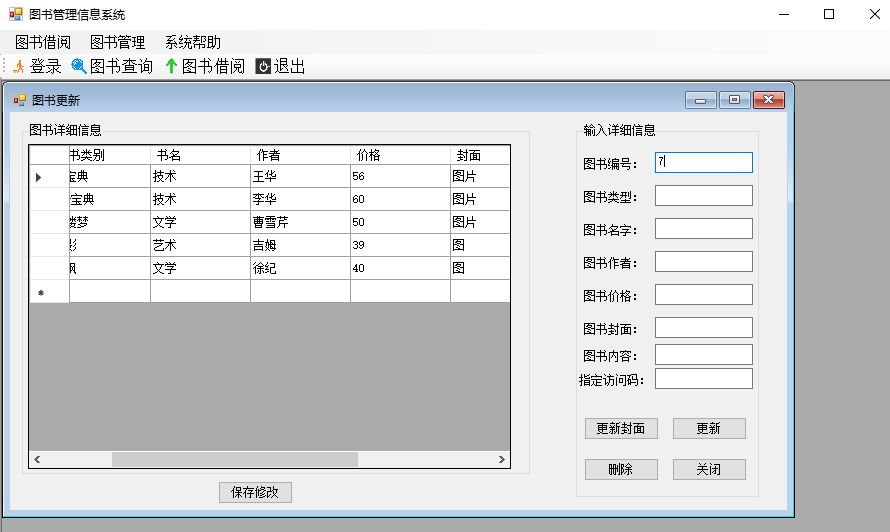
【C#项目】图书馆管理系统-WinForm+MySQL
文章目录前言一、业务梳理与需求分析1.功能描述2.实现步骤3.功能逻辑图二、数据库设计1.实体-关系(E-R图)概念模型设计2.数据表设计三、WinForm界面交互设计1、界面交互逻辑2、项目树3、主界面登录界面4、 图书查询界面5、图书借阅界面6、图书插入界面7、…...

RNN循环神经网络原理理解
一、基础 正常的神经网络 一般情况下,输入层提供数据,全连接进入隐藏层,隐藏层可以是多层,层与层之间是全连接,最后输出到输出层;通过不断的调整权重参数和偏置参数实现训练的效果。深度学习的网络都是水…...

一句话设计模式1: 单例模式
单例模式:全局唯一的对象。 文章目录 单例模式:全局唯一的对象。前言一、为什么要全局唯一?二、如何实现单例1. 注入到spring中2. 饿汉式3. 懒汉式第一种: 静态内部类第二种: synchronized 关键字第二种: 双重锁检查总结前言 单例可以说是设计模式中很常用的模式了,但也可以说…...
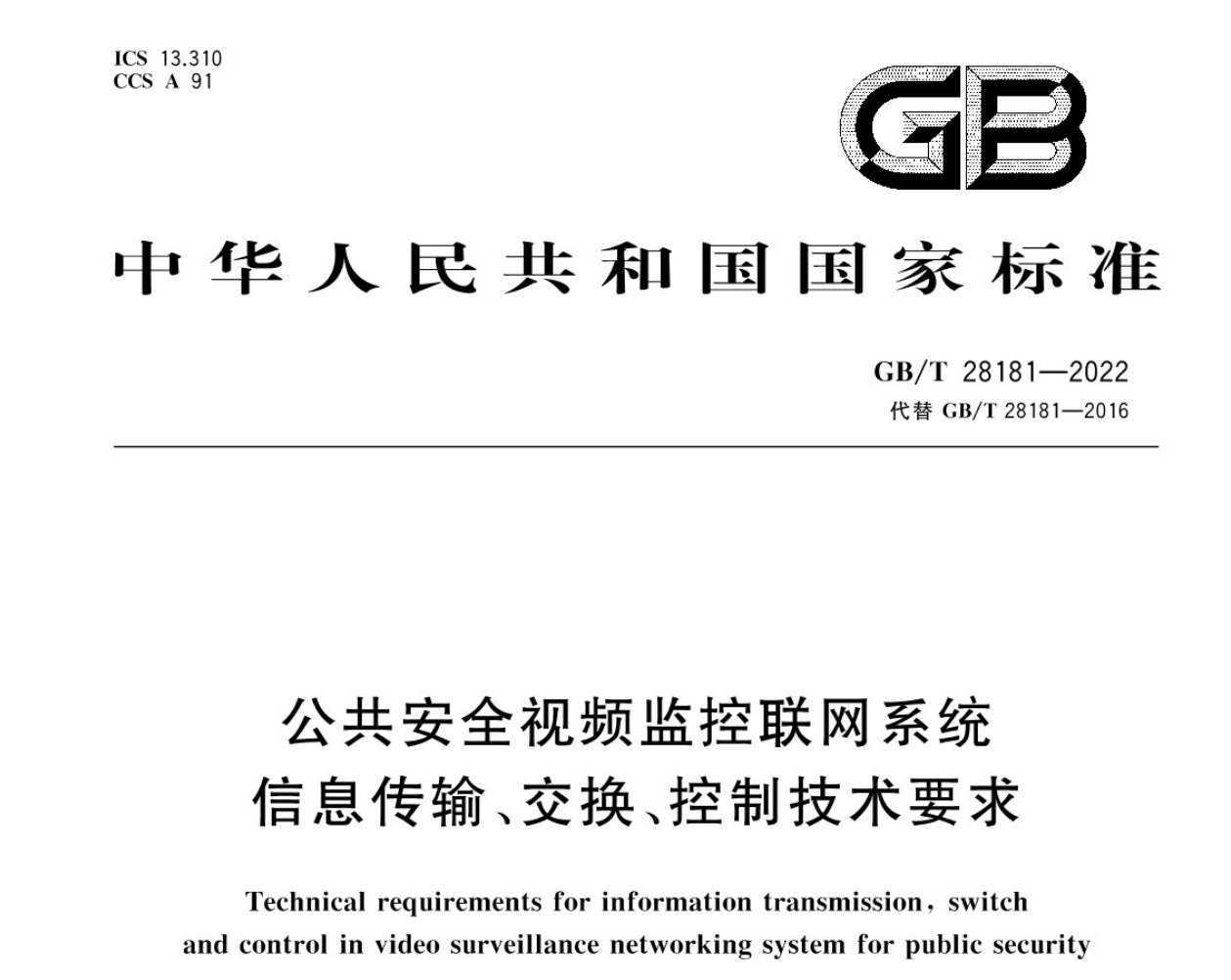
新版国家标准GB/T 28181—2022将于2023年7月1日正式实施,与GB/T 28181—2016差别有哪些?
新版国家标准GB/T28181-2022《公共安全视频监控联网系统信息传输、交换、控制技术要求》已于2022年12月30日发布,将于2023年7月1日正式实施。与GB/T 28181—2016相比,除结构调整和编辑性改动外,主要技术变化如下。——更改了标准范围…...
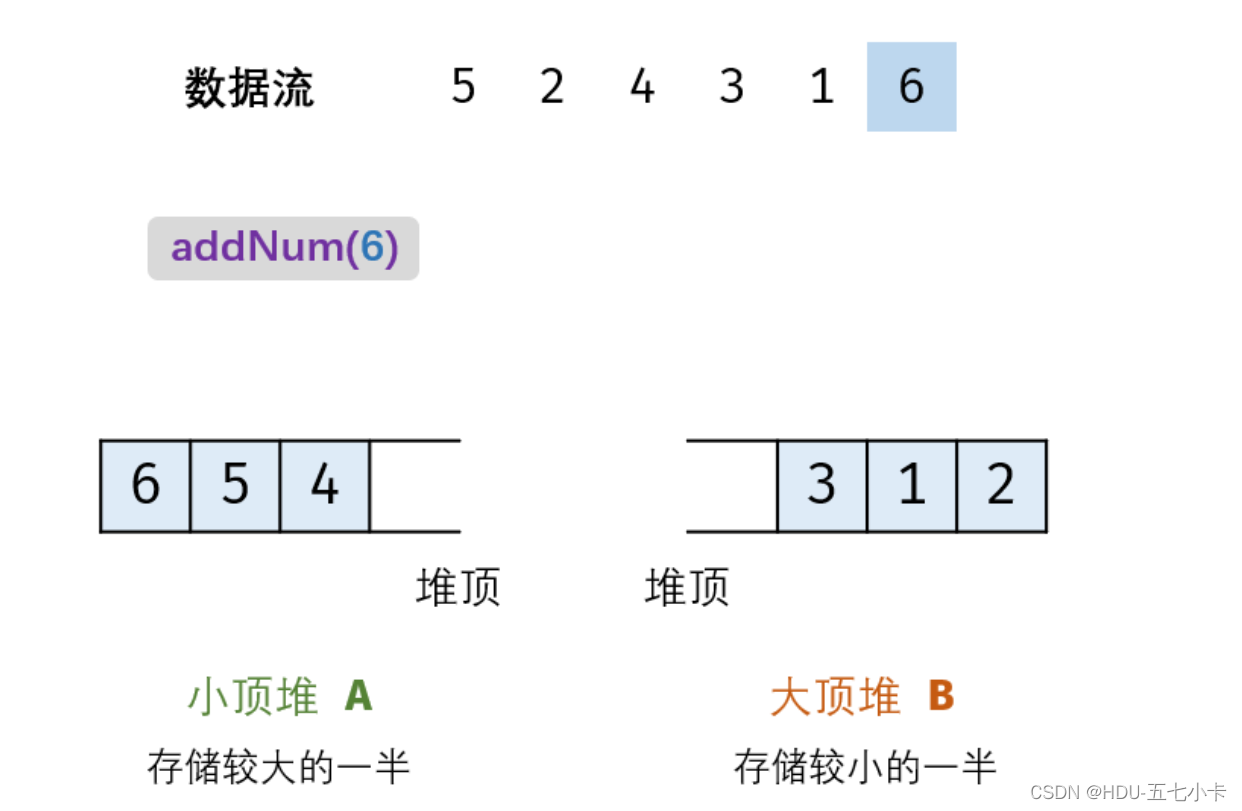
剑指 Offer 41. 数据流中的中位数
题目 如何得到一个数据流中的中位数?如果从数据流中读出奇数个数值,那么中位数就是所有数值排序之后位于中间的数值。如果从数据流中读出偶数个数值,那么中位数就是所有数值排序之后中间两个数的平均值。 例如,[2,3,4] 的中位数是…...

分布式架构下,Session共享有什么方案?
分布式架构下,Session共享有什么方案? 1.不要有Session:但是确实在某些场景下,是可以没有session的,其实在很多借口类系统当中,都提倡【API无状态服务】; 也就是每一次的接口访问,都…...

瀚博半导体载天VA1 加速卡安装过程
背景: 想用 瀚博半导体载天VA1 加速卡 代替 NVIDIA 显卡跑深度学习模型 感谢瀚博的周工帮助解答。 正文: 小心拔出 NVIDIA 显卡,在PCIe 接口插上瀚博半导体载天VA1加速卡,如图: 这时显示屏连接主板的集成显卡 卸载…...

服务降级和熔断机制
🏆今日学习目标: 🍀服务降级和熔断机制 ✅创作者:林在闪闪发光 ⏰预计时间:30分钟 🎉个人主页:林在闪闪发光的个人主页 🍁林在闪闪发光的个人社区,欢迎你的加入: 林在闪闪…...

史上最全最详细的Instagram 欢迎消息引流及示例
史上最全最详细的Instagram 欢迎消息引流及示例!关键词: Instagram 欢迎消息SaleSmartly(ss客服) 寻找 Instagram 欢迎消息示例,您可以用于您的业务。在本文中,我们将介绍Instagram欢迎消息的基础知识和好处…...

MDB 5 UI-KIT Bootstrap 5 最新版放送
顶级开源 UI 套件,Bootstrap v5 和 v4 的材料设计,jQuery 版本,数百个优质组件和模板,所有一致的,有据可查的,可靠的超级简单,1分钟安装简单的主题和定制 受到超过 3,000,000 名开发人员和设计师…...

做专家型服务者,尚博信助力企业数字化转型跑出“加速度” | 爱分析调研
01 从技术应用到业务重构,数字化市场呼唤专家型厂商 企业数字化转型是一个长期且系统性的变革过程。伴随着企业从信息化建设转向业务的数字化重构,市场对数字化厂商的能力要求也在升级。 早期的信息化建设主要是从技术视角切入,采用局部需求…...

CSS 重新认识 !important 肯定有你不知道的
重新认识 !important 影响级联规则 与 animation 和 transition 的关系级联层cascade layer内联样式!important 与权重 !important 与简写属性!important 与自定义变量!important 最佳实践 在开始之前, 先来规范一下文中的用于, 首先看 W3C 中关于 CSS 的一些术语定义吧. 下图…...
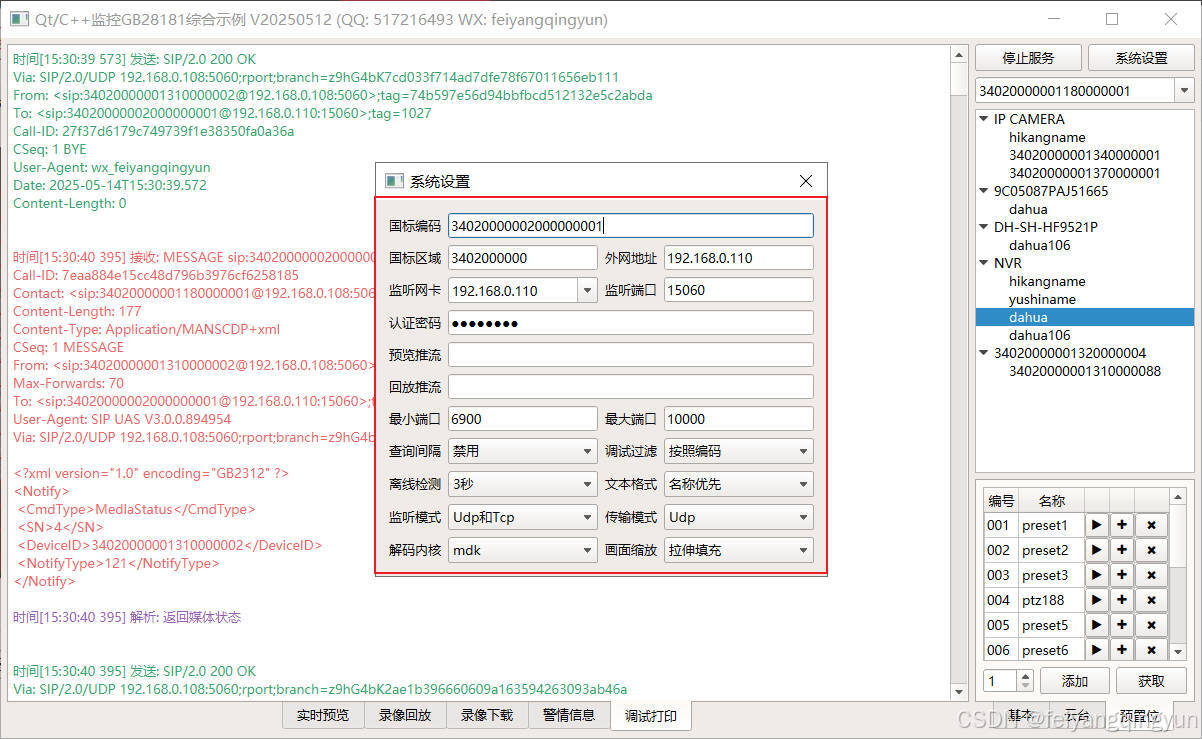
Qt/C++开发监控GB28181系统/取流协议/同时支持udp/tcp被动/tcp主动
一、前言说明 在2011版本的gb28181协议中,拉取视频流只要求udp方式,从2016开始要求新增支持tcp被动和tcp主动两种方式,udp理论上会丢包的,所以实际使用过程可能会出现画面花屏的情况,而tcp肯定不丢包,起码…...
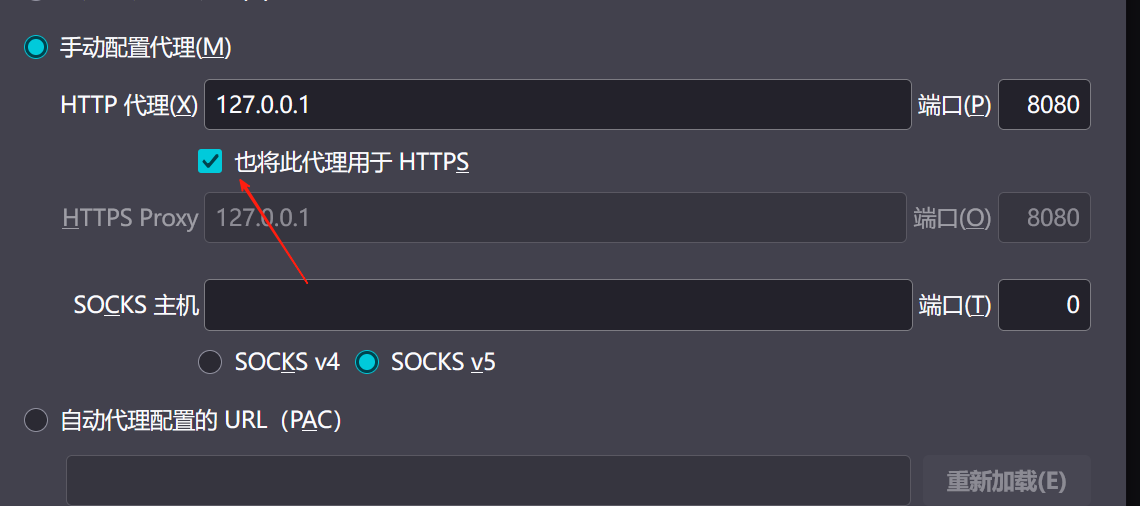
【2025年】解决Burpsuite抓不到https包的问题
环境:windows11 burpsuite:2025.5 在抓取https网站时,burpsuite抓取不到https数据包,只显示: 解决该问题只需如下三个步骤: 1、浏览器中访问 http://burp 2、下载 CA certificate 证书 3、在设置--隐私与安全--…...

土地利用/土地覆盖遥感解译与基于CLUE模型未来变化情景预测;从基础到高级,涵盖ArcGIS数据处理、ENVI遥感解译与CLUE模型情景模拟等
🔍 土地利用/土地覆盖数据是生态、环境和气象等诸多领域模型的关键输入参数。通过遥感影像解译技术,可以精准获取历史或当前任何一个区域的土地利用/土地覆盖情况。这些数据不仅能够用于评估区域生态环境的变化趋势,还能有效评价重大生态工程…...
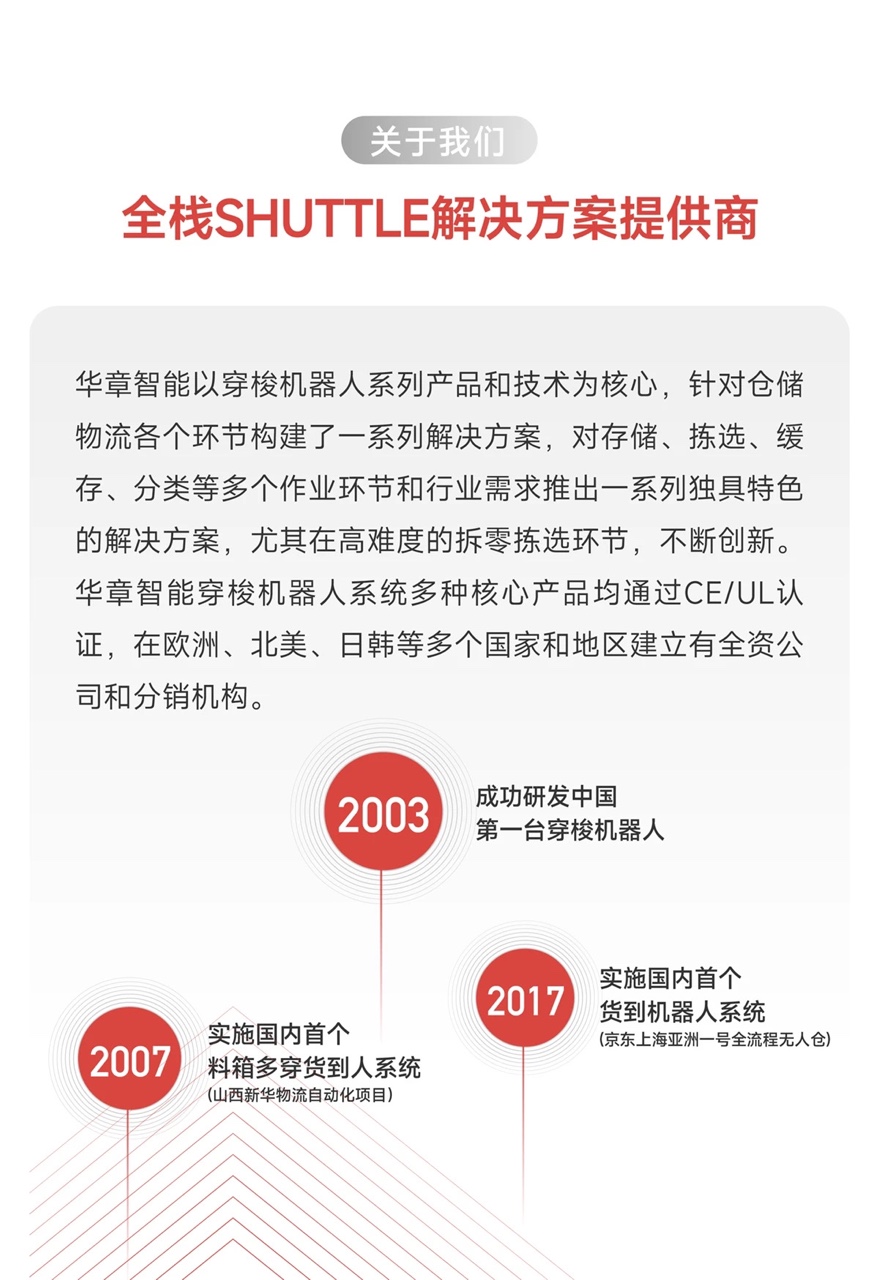
智能仓储的未来:自动化、AI与数据分析如何重塑物流中心
当仓库学会“思考”,物流的终极形态正在诞生 想象这样的场景: 凌晨3点,某物流中心灯火通明却空无一人。AGV机器人集群根据实时订单动态规划路径;AI视觉系统在0.1秒内扫描包裹信息;数字孪生平台正模拟次日峰值流量压力…...
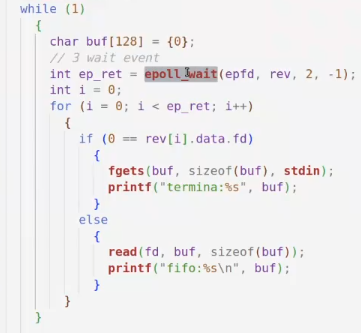
day36-多路IO复用
一、基本概念 (服务器多客户端模型) 定义:单线程或单进程同时监测若干个文件描述符是否可以执行IO操作的能力 作用:应用程序通常需要处理来自多条事件流中的事件,比如我现在用的电脑,需要同时处理键盘鼠标…...

django blank 与 null的区别
1.blank blank控制表单验证时是否允许字段为空 2.null null控制数据库层面是否为空 但是,要注意以下几点: Django的表单验证与null无关:null参数控制的是数据库层面字段是否可以为NULL,而blank参数控制的是Django表单验证时字…...
零知开源——STM32F103RBT6驱动 ICM20948 九轴传感器及 vofa + 上位机可视化教程
STM32F1 本教程使用零知标准板(STM32F103RBT6)通过I2C驱动ICM20948九轴传感器,实现姿态解算,并通过串口将数据实时发送至VOFA上位机进行3D可视化。代码基于开源库修改优化,适合嵌入式及物联网开发者。在基础驱动上新增…...
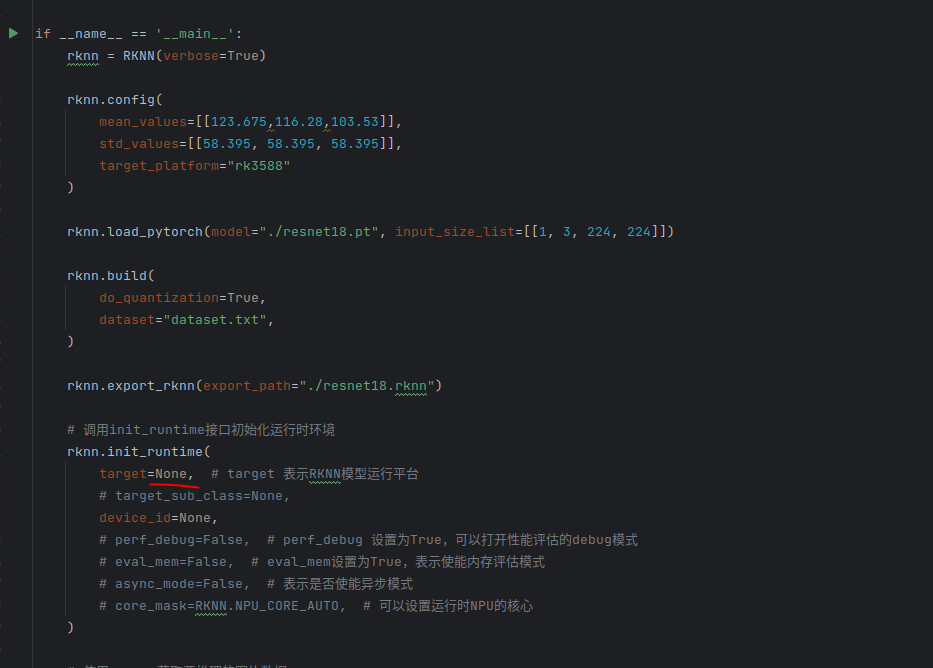
rknn toolkit2搭建和推理
安装Miniconda Miniconda - Anaconda Miniconda 选择一个 新的 版本 ,不用和RKNN的python版本保持一致 使用 ./xxx.sh进行安装 下面配置一下载源 # 清华大学源(最常用) conda config --add channels https://mirrors.tuna.tsinghua.edu.cn…...
0609)
书籍“之“字形打印矩阵(8)0609
题目 给定一个矩阵matrix,按照"之"字形的方式打印这个矩阵,例如: 1 2 3 4 5 6 7 8 9 10 11 12 ”之“字形打印的结果为:1,…...

如何把工业通信协议转换成http websocket
1.现状 工业通信协议多数工作在边缘设备上,比如:PLC、IOT盒子等。上层业务系统需要根据不同的工业协议做对应开发,当设备上用的是modbus从站时,采集设备数据需要开发modbus主站;当设备上用的是西门子PN协议时…...
